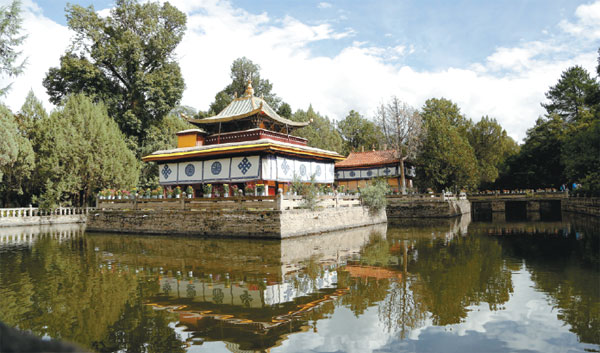Place of pilgrimage
|
The water palace in Norbulingka Summer Palace in Lhasa. |
Potala hosts more than 3,000 Buddhist statues, the largest of which is three stories high, while the smallest is fingernail sized.
Devotees tap wooden rails as a gesture symbolizing kowtowing to pray to each deity to seek its blessings according to its responsibilities in the divine division of labor.
The most pious travel to Potala from their hometowns by foot, kowtowing with each step along the way. They face Lhasa, stand straight, raise their hands, kneel and then lie on their stomachs and stretch out their arms, chanting sutras to the earth beneath their faces. Such ascetic practices demonstrate their faith while cleansing their souls.
Despite arduousness, the joy of moving closer to the holy place - physically and mentally - shows in their smiling faces.
The brand of happiness reflected in their eyes is scantly seen in the country's materially wealthier cities.
And even those of other faiths or none at all typically find a visit to Potala to be a spiritual experience.

















